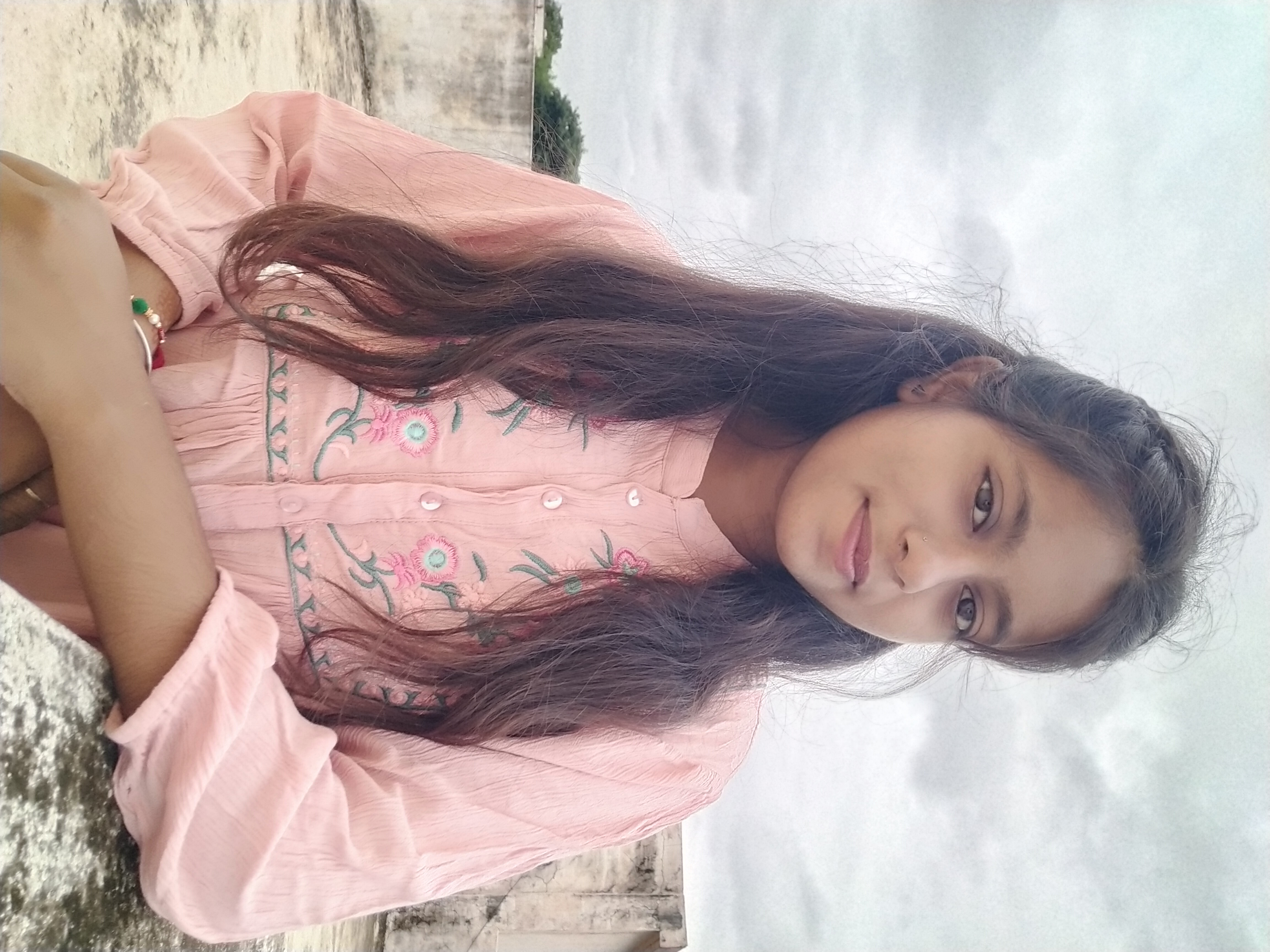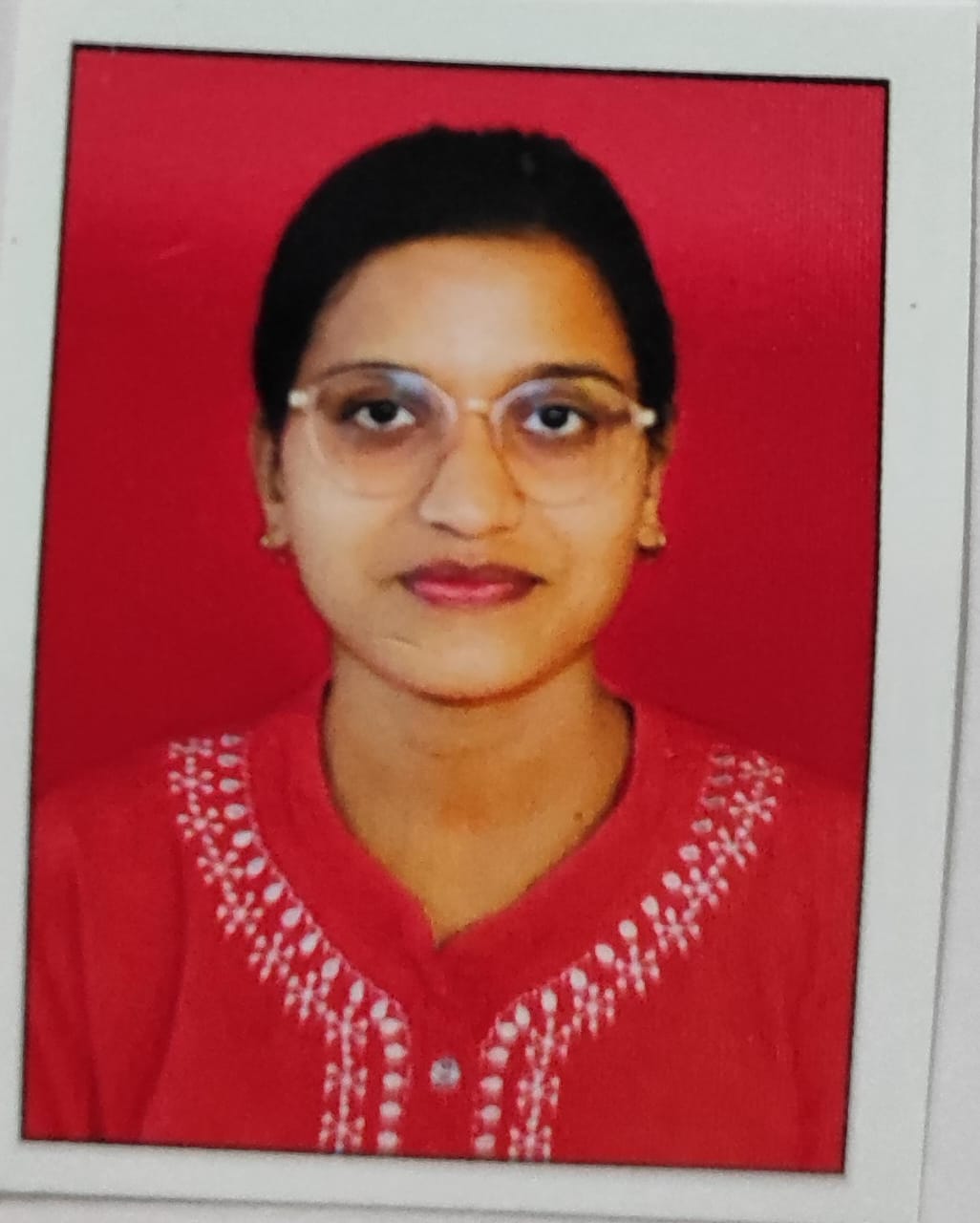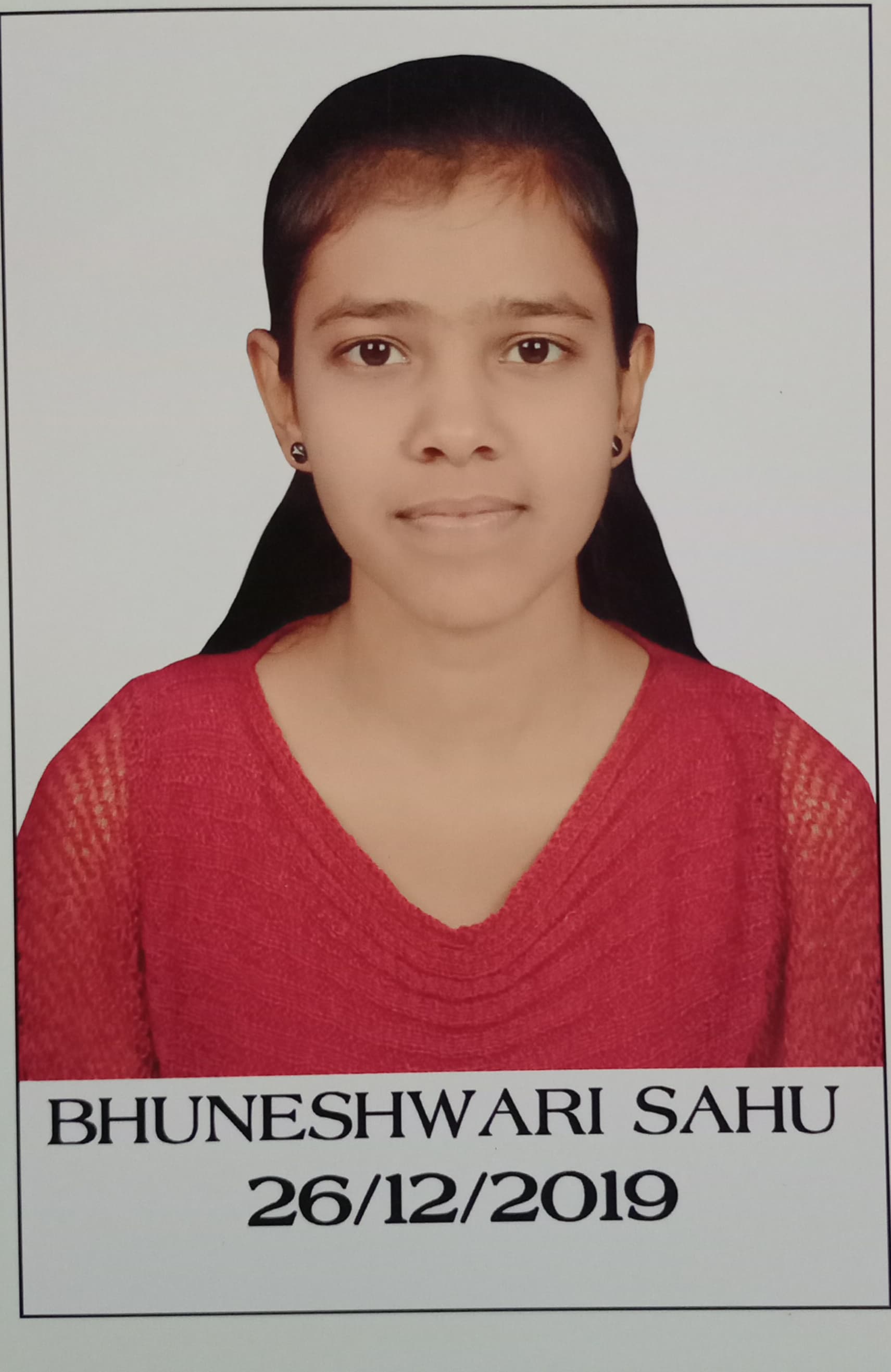Abstract
The primary goal is to list and label the classified information that is currently accessible on the plant Nyctanthes arbour tristis. Inflammation and wounds treated and prevented with Nyctanthes arbour tristis. It is particularly noticeable in contemporary medications because of the vast resources of the elite phytochemical classes. Alkaloids, flavonoids, steroids, saponins, and other phytochemicals aid in disease prevention. The main focus of this study is how Nyctanthes arbour tristis can prevent inflammation and heal wounds more effectively. They also have a number of other benefits, such as laxative, arthritis, pain, fever, cancer, rheumatism, and skin conditions.
Keywords
Nyctanthes arbour tristis, inflammation, wounds.
Introduction
The oldest known medical practice is herbal therapy. Herbal medicine is the oldest form of healthcare that people have ever used. Plants have always been a valuable source of treatment, and many of the drugs that are currently on the market have been made either directly or indirectly from them [1,2]. Almost all of the approximately 2000 natural medicines found in Indian literature are drawn from diverse old systems and folklore practices [3]. Natural products, especially those derived from higher plants, have historically played a significant role in the creation of novel medications [4]. Around 80% of people in developing countries receive the majority of their medical care from traditional medicine, according to estimates from the World Health Organisation (WHO) [5,6]. One well-known Indian medicinal plant is Nyctanthes arbortristis Linn. (NAT). The Ayurvedic, Siddha, Unani, and homeopathic medical systems all make substantial use of this potent traditional Indian medicine [7]. Nyctanthes arbortristis Linn is a widely distributed plant that grows in Thailand, Nepal, South and North India, and Northern Pakistan [8]. The leaf juice is used as a diuretic and to treat rheumatism, persistent sciatica, malarial fever, chronic fever, piles, and appetite loss. Fresh leaf juice has been suggested as a safe purgative for babies when mixed with honey and table salt [9,10]. By administering medication to a particular part of the body, typically the skin, a topical drug delivery device makes it possible to treat a range of conditions [11-13]. Drug distribution through the skin has long been seen as a promising concept since it is easy to access, has a large surface area with considerable exposure to the lymphatic and circulatory networks, and is a non-invasive method. Gel is made of a natural or synthetic polymer that creates a threedimensional matrix within a hydrophilic liquid or dispersion medium. The medication is encased in a small layer of the gel-forming matrix that physically covers the skin after the liquid evaporates when it is applied[14]. A gel's stiffness is derived from the network created by the gelling agent particles interacting. The kind of particles and their shape that create the links define the network's structure and gel characteristics [15].Numerous side effects are associated with the commonly available steroidal and non-steroidal anti-inflammatory and wound-healing medications. Many investigations are being carried out to find natural anti-inflammatory and wound healing medications.
2. Inflammation.
Inflammation is your body's response to a disease, trauma, or foreign substance (such as dangerous chemicals or bacteria). Inflammation is a necessary and normal process that helps your body heal. For example, your body's inflammatory system is operating normally when you have a fever. On the other hand, inflammation can be detrimental if it forms in healthy tissues or lasts for a long time. When you are injured or an invader (such as a virus) tries to enter your body, your immune system launches its first defences. These consist of the inflammatory cells themselves as well as cytokines, which are chemicals that encourage the development of additional inflammatory cells. These cells trigger an inflammatory response to absorb infections or poisons and start the healing process of injured tissue. Inflammation can manifest as pain, swelling, or discolouration. In these ways, your body is healing itself. Moderate inflammation and minimal pain are idea [19].
2.1 What distinguishes acute inflammation from chronic inflammation?
Acute and chronic inflammation is the two primary forms. Chronic inflammation can last for months or years, whereas acute inflammation is abrupt and transient.
2.1.1 Acute inflammation
Your immune system responds to an unforeseen illness or injury in this way. The healing process is initiated by inflammatory cells that migrate to the site of infection or injury, such as a cut on your finger. Inflammation that is abrupt and typically transient can be caused by infections in many body areas .For example, both bacterial and viral diseases, such as strep throat and the flu, can cause inflammation in the throat. Various bacterial and viral infections can cause inflammation (enteritis) in your small intestine. Depending on your health, acute inflammation might persist for a few hours to a few days.
2.1.1.1 Signs of acute inflammation are –
When a certain area of your body is injured, you could observe:
- Skin that is flushed or discolored.
- Only the wounded site should experience slight pain or soreness.
- Swelling (such as inflammation in the knees).
- Limited range of motion or other difficulties using that bodily part as you typically would.
2.1.2 Prolonged inflammation
This occurs when, in the absence of danger, your body keeps producing inflammatory cells.For example, in rheumatoid arthritis, inflammatory cells and chemicals target joint tissues. Your joints may suffer significant damage as a result of the sporadic inflammation this causes. Your body's defences are weakened by chronic inflammation. Chronic inflammation can last anywhere from a few months to several years. Sometimes things might get better, and other times it might grow worse. Numerous disorders (inflammatory diseases) have been connected by researchers to persistent inflammation.
2.1.2.1 What signs of prolonged inflammation are present?
Symptoms of chronic inflammation could be more difficult to identify than those of acute inflammation. You might have:
- Ache in the abdomen.
- Chest discomfort.
- Exhaustion and/or sleeplessness.
- Fever.
- A rash on the skin.
- Anxiety, depression, and other mood disorders.
2.2 Why does inflammation occur?
Acute inflammation is usually caused by infections and injuries. The majority of chronic inflammation instances are caused by environmental factors, such as elements of your everyday life and exposure to contaminants. Typical reasons include:
- Low levels of exercise.
- Ongoing stress.
- Dysbiosis or an imbalance between beneficial and detrimental bacteria in your gut.
- Disturbed circadian rhythm and sleep.
- Consuming tobacco products.
- Regularly consuming excessive amounts of alcohol [18].
3. Wounds
A rupture in any unbroken tissue of body brought on by aggressive or cruel behavior is wound, whichdefines as any external agency activity, such as surgery. Numerous subcategories are conceivable within this broad concept, which considers and groups together the different types of tissue injury or violence. The difference among open and closed wounds is crucial. When the skin or mucous membranes that protect the body are compromised, foreign things can enter the tissues and cause open wounds. The healing process, on the other hand, can proceed without the impediment that pollution, in one way or another, causes since closed wounds shield the injured tissues from the environment. Depending on how the wound was produced, more distinctions could be formed.
3.1 Closed wounds
The force and direction of a direct blow determine how seriously it injures a person. It goes without saying that the more force applied, the greater the damage. Though less obvious, the consequences of orientation are just as significant. Like, a tapper strike to the side of the head may cause severe scalp bruising, or, if delivered with the same force but in the opposite direction, may cause major damage to the base of the skull. The extent of the injury may also be influenced by anatomical and physiological factors. Therefore, a toddler, young adult, or old person may experience quite varied outcomes from a fall on an outstretched hand. Bruising or contusion, which is caused by blood seeping into the tissues from broken tiny vessels and swelling from fluid passing through the walls of injured capillaries, are examples of how a relatively minor hit can harm the skin and soft tissues underneath. The bleeding usually stops suddenly, the fluid and blood are soaked up and the part reverse to normal. Much more blood leaks from damaged, bigger vessels, where it gathers in the tissues to create a lump known as a hematoma.
Any of the subcutaneous tissues, could sustain harm from a direct, powerful strike. The trauma on a tissue, as a hammer breaking a skull, more frequently, the force that impact traveling via a comparatively weak area of body, may cause damage to subcutaneous tissues. Therefore, a fall onstretched out hand may cause damage to hand's tissue and bones, but more often, the force to another area of the arm, like the radius in the forearm just above the wrist or the scaphoid bone in the wrist, or the direction of stress and the individual's anatomy define the breaking point, which can be at the elbow, shoulder, or slightly above the radial wrist in the forearm, or at the scaphoid bone in wrist. On a white background, a Yorkshire terrier is dressed as a doctor or veterinarian (Canines).
3.2 Open wounds
A wound is exposed to additional riskswhen the epidermis is fractured, or when the mucous membrane is damaged in the event of injuries to the sinuses or base of the skull. This is because foreign materials like bacteria, dirt, and clothing fragments may infiltrate the tissues, leading to serious local or general infection-related complications. Furthermore, the harm from the wounding agent itself may be exacerbated if the skin break is big since the injured tissues will be exposed for aeration. A wound can become contaminated at the time of wounding or at any point after that until it has healed completely. Different nonbacterial pollutants have very different impacts. The degree of contamination is usually the most important consideration for nonbacterial pollutants. The type of pollutant is more significant when it comes to bacterial contaminants. There are several types of infections brought on by virulent bacteria that feed on debris, but the most significant ones are: gas infection, which is the most frightening because it always appears in muscle rupture tissue and spreads dangerously quickly to be fatal if left untreated by surgery or medicine; infections brought on by organisms like Streptococcus and Staphylococcus; and coliform bacteria, where a general reaction that may be severe is accompanied by a prominent local production of pus; and tetanus, an infection that often becomes fatal a few days after the wound has occurred, often with no noticeable local manifestations but characterized by widespread muscle spasms.
4. Nyctanthes arbortristis
In India, Nyctanthes arbortristis Linn is a medicinal herb. It is widely acknowledged to be a member of the Oleaceae family. Common names for it include "parijat," "night jasmine," and "harsingar." The Greek word "nyctanthes" means "night flower," whereas "arbortristis" means "sad tree" because as it become duller at the day time [20]. Nyctanthes arbortristis is commonly used in the Ayurveda system of medicines as a decoction to treat inflammatory conditions such as sciatica, arthritis, knee discomfort, low backache, and others. The inquiry looked at the part soluble in water of the alcoholic leaf extract of Nyctanthes arbortristis to see if it has anti-inflammatory qualities. NAT was shown to significantly impede the growth of granulation tissue in subacute models. Furthermore, it was demonstrated that NAT decreased the inflammatory response to both the PPD-induced tuberculin reaction and Freund's adjuvant arthritis. Because of its anti-inflammatory qualities, proponents of the Ayurvedic medicinal system use the leaves of Harsingar to treat a range of inflammatory conditions [28]. Iridoid glucosides, which comprise arbortristoside A, B, and C from the seeds, are the primary class of physiologically potent compounds. They have antiviral, Anti-inflammatory, Anti-cancer, and Anti-leishmanian properties. Other substances found in leaves have also been demonstrated to possess Anti-leishmanial, Anti-inflammatory, and Anti-cancer qualities. The raw extracts had an LD50 of 16 gm/kg [26].
4.1 Taxonomical classification
|
Kingdom
|
Plantae
|
|
Division
|
Magnoliophyta
|
|
Class
|
Magnoliopsida
|
|
Order
|
Lamiales
|
|
Family
|
Oleaceae
|
|
Genus
|
Nyctanthes
|
|
Species
|
Arbortristis
|
|
Biological name
|
Nyctanthes arbor-tristis
|
4.2 Distribution and External Morphology
A massive shrub or small wild tree in Madhya Pradesh, the sub-Himalayas, and the Godavari region, with a maximum height of five meters. It is grown in gardens for its fragrant blossoms. An enormous shrub or small tree with young, rough, hairy branches that are sharply quadrangular and covered in stiff white hairs.
Sessile, deliciously fragrant flowers with pedunculate bracteate fascicles of three to five, peduncles four-angled, thin, hairy, axillary, and solitary, and bracts widely oval or suborbicular, apiculate, and bifacially hairy in terminal short trichotomous cymes. The calyx, narrowly bellshaped, ciliated, terminate, or faintly pointed or rounded, hairy on outside, and hairless on the inner side. The corolla hairless is more than 13 mm, with lobes that are white, unevenly obcordate, and cuneate, and a tube that is 6–8 mm long and orange in color. The capsule is oblong or nearly orbicular, compressed, two-celled, reticulately veined, glabrous, and 2 cm long and broad. It separates into two flat, one-seeded carpels.
-
- Uses include:
- In cases of fever, fresh leaf juice is administered with honey. As a specific treatment for gridhrasi roga, the leaves' decoction is advised.
- The leaves are used to treat rheumatism, fever, and reptile venous anemia.
- Dandruff and other sealing conditions can be treated with the powdered seeds.
- When combined with Arjun bark, the bark is thought to help cure wounds, including fractured bones, and treat internal ailments.
- Tribal people utilize the herb to treat snake bites, cancer, lesions, ulcers, dysentery, menorrhea, and bites from wild animals, including dogs and jackals [21].
4.4 Composition of Chemicals
In addition to free glucose and fructose, the leaves of Nyctanthes arbortristis included Dmannitol,B-amyrin, hentriacontane,B-sitosterol, and benzoic acid. Two flavonol glycosides, astragellin and nicotiflorin, as well as an unidentified alkaloid, were obtained from the ethanolic extract of the leaves. According to a preliminary chemical analysis, the leaves lacked saponins and flavonoids and contained evidence of an alkaloid. However, the entire plant, excluding the roots, had no tannins.
Pinene, p-cymene, L-hexanal, methyl-heptanone, phenylacetaldehyde, L-delanol, and anisaldehyde were all present in the oil extracted from N. arbortristis flowers. The Bmonogentiobioside ester of acrocetin was the main component of the acetone extract of the corolla tubes, whereas the B-digentiobioside ester of a-acrocetin was the minor component [22].
1.5 Pharmacological study
Mice exposed to a 50% ethanolic extract of N. arbortristis (the entire plant) experienced hypothermia and a central nervous system depressant effect. The extract did not affect the ileum of isolated guinea pigs or have any antibacterial, antifungal, antiviral, anticancer, or diuretic properties. Likewise, it had no impact on the experimental animals' CVS. In albino mice, the extract's LDs were shown to be greater than 1000mg/kg I.P.
In rats with acute, subacute, and chronic inflammation models, the water-soluble component of the leave's alcoholic extract demonstrated strong anti-inflammatory activity.
In the rat hind paw, it prevented acute edema brought on by various inflammatory or irritating agents, including carrageenin, formalin, histamine, 5-HT, and hyaluronidase. Additionally, it lessened the inflammatory swelling that rats' knee joints experienced after receiving an intrasynovial injection of turpentine oil.
In the cotton pellet test, the extractive dramatically decreased the production of granulation tissue. There was a documented decrease in the production of granulomas. In both the acute and chronic phases of inflammatory swelling, the formaldehyde-induced granuloma pouch, a dosedependent type of arthritis, was markedly reduced. Additionally, Freund's adjuvant arthritis and PPD-induced tuberculin response, two immunological processes, were suppressed by the extract. Nyctanthes arbor-tristis bark extract produced two alkaloids (soluble in water and chloroform, respectively) and a glycoside. At dose of 1mg/kg, the glycoside boosted the frog's heart contraction amplitude; at larger doses, however, it caused an atrioventricular block. Additionally, the glycoside accelerated the ciliary motions of the esophagus and depressed the frog's central nervous system. The bark extract demonstrated inhibition against the potato virus, but the alkaloids and glycosides had no effect on the dog's blood pressure or breathing [24].
5. CONCLUSION
A traditionally used medicinal plant, Nyctanthes arbortristis, has shown strong antiinflammatory and healing properties, making it a promising herbal treatment for inflammatory diseases and wounds. Nyctanthes arbortristis's herbal gel formulation has demonstrated improved stability, effectiveness, and bioavailability. By improving our knowledge of Nyctanthes arbortristis herbal gel, we can fully utilize its therapeutic potential and offer cutting-edge treatments for inflammatory and wound disorders.
REFERENCES
- Saha D, Guite D, Das T. A Complete Review on the Pharmacological Evaluation of Averrhoa Carambola Plant. World J. Pharm. Res. (2018) 12:7:199-210.
- Lee H. Lazan H, Othman R, Ali. Purification and properties ofß-from carambola fruit with activity towards cell wall. Phytochemistry, (2005) 66:153.
- Dasgupta P, Chakraborty P, Bala N. Averrhoa carambola: an updated review. International Journal of Pharma Research & Review. 2013 Jul;2(7):54-63.
- Chau CF, Chen CH, Lee MH. Characterization and physicochemical properties of some potential fibres derived from Averrhoa carambola. Food/Nahrung. 2004 Jan;48(1):43-46. 5. Palanivelu M, Ramlingam N, Ganesan B. Formulation and Evaluation of Herbal Gel Containing Averrhoa carambola linn Fruit Extract. Asian Journal of Pharmaceutical and Health Sciences.2019;9(2):2084-2093.
- Akter, J.; Takara, K.; Islam, M.J.; Hossain, M.A.; Sano, A. and Hou, D. (2019). Isolation and structural elucidation of antifungal compounds from Curcuma amada. Asian Pacific Journal of Tropical Medicine, 12(3): 123-129.
- Meshram MM, Rangari SB, Kshirsagar SB, Gajbhiye S, Trivedi MR, Sahane RS. Nyctanthes arbor-tristis an herbal panacea. International Journal of pharmaceutical sciences and research. 2012 Aug 1;3(8):2432.
- Chidi BB, Pandeya S, Gharti KP, Bharati L. Phytochemical Screening and Cytotoxic Activity of Nyctanthes ArborTristis. Indian Research Journal of Pharmacy and Science. 2015;5:205-17.
- Biswas1 I, Mukherjee A. Pharmacognostic Studies On The Leaf Of Nyctanthes ArborTristis, Acta Botanica Hungarica. 2011; 53(3):225-34.
- M. W. Whitehouse, Antiinflammatory glucocorticoids drugs:reflections after 60 years. Inflammo Pharmacology.2011;19(1):119.
- Jyothi D, Koland M. Formulation and evaluation of an herbal anti-inflammatory gel containing Trigonella foenum greacum seed extract. International Journal Pharm Pharm Sci. 2016;8(1):41-.44.
- Norris DA. Mechanisms of action of topical therapies and the rationale for combination therapy. J Am Acad Dermatol 2005;53:17-25.
- Yasir EN, Khashab AL, Yasir MK, Hamadi SA, Al-Waiz MM. Formulation and evaluation of ciprofloxacin as a topical gel. Asian J Pharm sci 2010;8:80-95.
- Anonymous. Indian Pharmacopoeia. Vol. II. Controller of Publications, Edition 4th, New Delhi: Government of India; 1996.
- Norris DA. Mechanisms of action of topical therapies and the rationale for combination therapy. J Am Acad Dermatol 2005;53:17-25.
- British Heart Foundation. Inflammation: What is it, and how does it affect the heart? (https://www.bhf.org.uk/informationsupport/heart-matters-magazine/research/what-isinflammation) Published 8/13/2021. Accessed 3/22/2024.
- Centers for Disease Control and Prevention (U.S.). What is inflammatory bowel disease (IBD)? (https://www.cdc.gov/ibd/what-is-IBD.htm) Last reviewed 4/13/2022. Accessed 3/12/2024.
- Centers for Disease Control and Prevention (U.S.). What is inflammatory bowel disease (IBD)? (https://www.cdc.gov/ibd/what-is-IBD.htm) Last reviewed 4/13/2022. Accessed 3/12/2024.
- National Institute of Environmental Health Sciences (U.S.). Inflammation (https://www.niehs.nih.gov/health/topics/conditions/inflammation/index.cfm). Last reviewed 4/28/2021. Accessed 3/22/2024.
- Kirtikar KR, Basu BD, Singh B, Singh MP. Indian medicinal plants 1975; 1(2):2392-93. 21. Dhakad, G. G., Tambe, K. P., Shirsat, S. P., & Jaiswal, N. R. (2022). Review on Medicinal use of Nyctanthes arbortristis. Research journal of Pharmacology and Pharmacodynamics, 14(3), 179-182.
- Chamoli, R. T., Minj, S., & Singh, V. (2019). Phytochemical chemical characters of Nyctanthes arbortristis Linn.: A promising medicinal plant. Journal of Medicinal Plants, 7(6), 141-143.
- Bhosale, A. V., Abhyankar, M. M., Pawar, S. J., Khan, S., & Patil, N. (2009). Nyctanthes Arbortristis: A Pharmacognostic Review. Research Journal of Pharmacognosy and Phytochemistry, 1(2), 91-97.
- Paikara, D., Singh, S., & Pandey, B. (2015). Phytochemical analysis of leave extract of Nyctanthes arbortristis. IOSR J Environ Sci Toxicol Food Technol, 1(3), 39-42.
- Yashaswini, S., Hegde, R. V., & Venugopal, C. K. (2011). Health and nutrition from ornamentals. International Journal of Research in Ayurveda & Pharmacy, 2(2), 375-382. 26. Virshette, S. J., Patil, M. K., & Somkuwar, A. P. (2019). A review on medicinal plants used as antiinflammatory agents. Journal of Pharmacognosy and Phytochemistry, 8(4), 16411646.
- Sigdel, B., Khanal, D. P., & Dhungana, B. R. (2006). Phytochemical and Biological study on leaves extract of Nyctanthes arbor-tristis L. Asian Journal of Pharmacognosy, 5(3), 5-14.
- DM, K., Dhakne, R. B., & Patil, R. R. (2022). REVIEW OF NYCTANTHES ARBORTRISTIS AS A MEDICINAL PLANT. Ind. J. Res. Methods Pharm. Sci, 1(1), 21-
- Kakoti, B. B., Pradhan, P., Borah, S., Mahato, K., & Kumar, M. (2013). Analgesic and antiinflammatory activities of the methanolic stem bark extract of Nyctanthes arbor-tristis linn. BioMed research international, 2013.
- Nirmal, S. A., Pal, S. C., Mandal, S. C., & Patil, A. N. (2012). Analgesic and antiinflammatory activity of ?-sitosterol isolated from Nyctanthes arbortristis leaves. Inflammopharmacology, 20(4), 219-224..


 Shikha Sahu *
Shikha Sahu *
 Payal sahu
Payal sahu
 Bhuneshwari sahu
Bhuneshwari sahu
 Dikeshwar verma
Dikeshwar verma
 Bishesar sahu
Bishesar sahu
 10.5281/zenodo.14750635
10.5281/zenodo.14750635